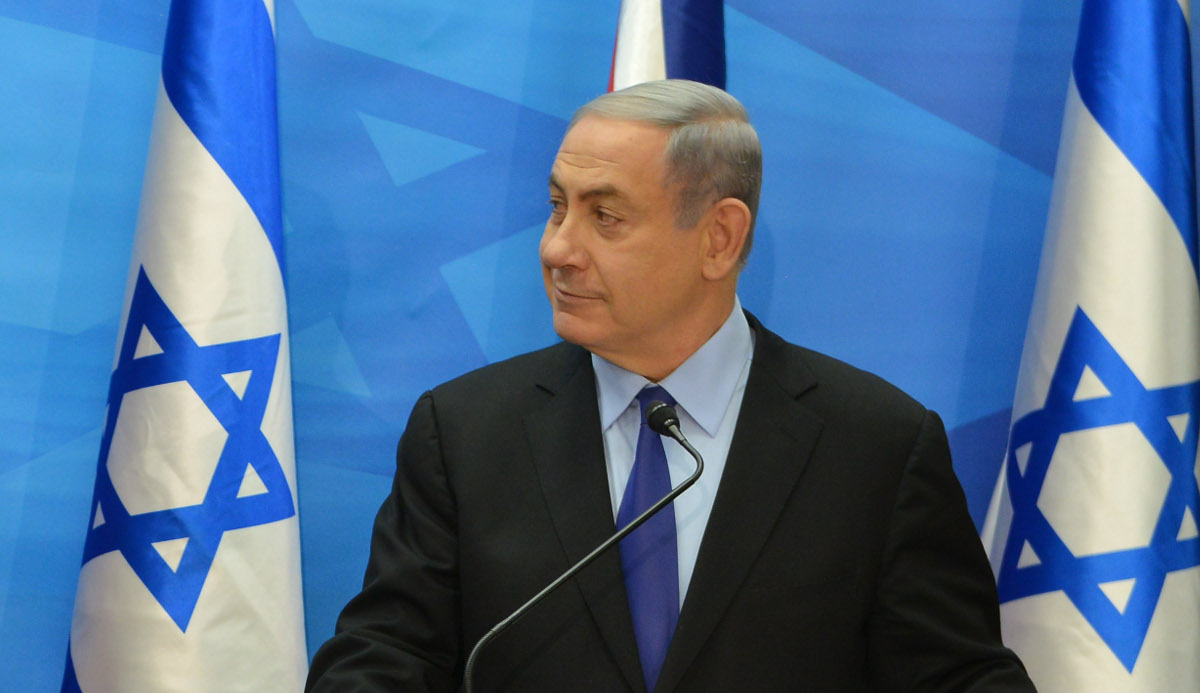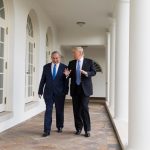by Shemuel Meir
UN Security Council resolution 2334 caught Prime Minister Netanyahu off guard. Out of the clear blue sky. From a territorial perspective, which is the heart of 2334, the Security Council resolution represents an escalation in the way the international community relates to Israel’s borders and its settlements in the West Bank.
The Israeli prime minister read the resolution carefully. Netanyahu’s fiery response — as if the United States was part of some conspiracy and abandoning Israel — is the other side of the strength and surprise of the resolution.
From its first line, the Security Council resolution ties itself to one of the most important resolutions relating to the Middle East: Security Council Resolution 242 of November 1967. Resolution 2334 opens by citing and reaffirming the most important pillar of 242: the inadmissibility of the acquisition of territory by war — a rejection of unilateral annexation. From here on out, the international community’s authoritative interpretation that Israel’s legitimate borders are the pre-1967 lines will be based not only on Resolution 242, but also on 2334. The Security Council drew a line in the sand, or rather, a border: the border between the State of Israel and the State of Palestine.
In order to prevent any misunderstanding or a repeat of Israel’s attempts to play down this interpretation, as it did with 242, paragraph 3 of Resolution 2334 spells out that Israel’s borders should be understood within the context of the June 4, 1967 lines. The world will not recognize any unilateral changes to the ’67 lines. The resolution also makes clear that the settlements have no legal validity (paragraph 1), and that they are a major obstacle to the achievement of the two-state solution (paragraph 4).
Resolution 2334 further adopts the European Union’s approach and builds on the “Mogherini Doctrine” of labeling settlement products and applies it to diplomacy, economics, finance, and science fields. Paragraph 5 explicitly calls on states to distinguish, in their relevant dealings, between the territory of the State of Israel and the territories occupied since 1967.
It is true that Resolution 2334 includes East Jerusalem as part of the occupied territories, but the international community has always treated Jerusalem and its holy places separately (starting from its designation as a corpus separatum in the 1947 partition plan). With regards to Jerusalem, the international community (and the Palestinians, it appears) have accepted the Clinton Parameters: East Jerusalem’s Jewish neighborhoods to Israel; its Arab neighborhoods to Palestine.
There are those in Israel who attempted to diminish the importance of Resolution 2334. They hung their hopes on President-elect Donald Trump overturning the UN resolution. It’s not clear how they think Trump could somehow pull back a document that enjoys such international consensus. People close to Netanyahu seem to believe everything will be resolved when, in the Israeli prime minister’s first meeting with soon-to-be President Trump, the two will renew the Bush-Sharon letter of 2004.
The exchange of letters between then-President George W. Bush and Prime Minister Ariel Sharon has gained almost metaphysical status among those Israelis who believe in annexing the West Bank, and the right wing regularly waves it around. As far as they are concerned, renewing the Bush-Sharon letter would put Israeli-American relations back on the right track — by giving tacit American approval to annexing the “settlement blocs.” That amorphous catch-all, “settlement blocs,” could be interpreted to include most of the Israeli settlements in Area C (60 percent of the West Bank) — leaving only non-contiguous Palestinian enclaves. The problem with this argument: there is no factual foundation for a U.S. policy that allows Israel to annex “settlement blocs” that would stay under Israeli control in a final status agreement. And there is no such promise in the Bush-Sharon letter.
Relying on the Bush-Sharon letter as if it declared once and for all that Israel can unilaterally expand its borders is shaky logic at best. In his letter to Sharon, President Bush mentions the United States’ commitment to an independent Palestinian state no fewer than six times. “[T]he United States supports the establishment of a Palestinian state that is viable, contiguous, sovereign, and independent,” is the exact quote. President Obama made a nearly identical statement in his 2011 speech at the State Department, and it constitutes the first parameter of John Kerry’s speech explaining Washington’s support of Resolution 2334.
In fact, the Bush-Sharon letter mentions neither “settlement blocs” nor the annexation of any blocs to the State of Israel — not even the Jordan valley. The paragraph that talks about borders actually notes that they should be resolved in accordance with UN Resolution 242. In the same paragraph, President Bush clarifies that, “in light of new realities on the ground, including already existing major Israeli populations centers, it is unrealistic to expect that the outcome of final status negotiations will be a full and complete return to the armistice lines of 1949.” In other words: the armistice lines from Israel’s War of Independence, which defined the State of Israel until June 1967, are the basis for Israel’s recognized borders.
The term “population centers” can be interpreted in different ways to include, inter alia: urban population centers, neighborhoods in East Jerusalem and settlements. But not “settlement blocs” that eat up large swaths of land in the West Bank. President Bush made clear — and President Obama reiterated this position — that the inclusion of such population centers will be part of a final status agreement that “will only be achieved on the basis of mutually agreed changes that reflect these realities.” Unilateral annexation is not an acceptable option.
Secretary Kerry’s parameters speech reiterated the American interpretation of the Bush-Sharon letter. It included no indication of granting legitimacy to unilaterally annexing settlement blocs — quite the opposite. Certain settlements are likely to become part of Israel only as part of negotiations leading to an agreement between Israel and Palestine on the basis of pre-’67 lines with mutually agreed land swaps. That is how the United States has expressed its clear and absolute objection to unilateral annexation. One can presume that even clearer messages have been delivered via diplomatic channels.
Presidents Obama and Bush held nearly identical positions on the territorial issues. It’s difficult to assume that President Trump will turn that stance on its head — it is a position that Washington has held consistently since Resolution 242 and the 1969 Rogers Plan that included minor territorial adjustments. From the American standpoint, the two-state formula based on 1967 lines is the only solution that can prevent a one-state apartheid model (the main part of Kerry’s speech) and which can bring about peace accords between Israel and the Arab world (the Arab Peace Initiative). Secretary Kerry indicated that there can be no regional peace accords made by taking shortcuts and bypassing the creation of an independent Palestine.
Security Council Resolution 2334 is territorial by nature, and it fits the United States’ approach to territorial matters in the Israeli-Palestinian conflict. It represents the basic American stance with regards to territory and borders. It is because of that alignment that the United States allowed it to pass.
There are also operative aspects. The new Security Council resolution also links itself to the Paris Peace Conference, which according to its mandate adopted in June 2016 is meant to “fully [end] the Israeli occupation that began in 1967.” Along with Kerry’s parameters speech, Resolution 2334 is meant to serve as an outline and platform for the Paris Conference, which is meant to reconvene on January 15, 2017, in order to advance the French initiative.
The obligation to report back to the UN secretary general about the settlements and to issue progress reports every three months (paragraph 12 of Resolution 2334) will ensure that the matter doesn’t drop off the global agenda. Likewise, we can expect the innovative use of technology to monitor settlement growth. Instead of maps by Peace Now, you can expect satellite imagery to be used. The difference in impact will be huge.
UN Security Council Resolution 2334, taken together with Resolution 242, lays out a new paradigm for the world powers’ approach to the question of what are Israel’s borders. The resolution reiterates the international consensus whereby the status quo in the West Bank cannot continue, and demands urgent steps in order to create a situation to enable a two-state solution along pre-1967 lines. Territory is the name of the game. All the other parts of a final status solution stem from it.
Reprinted, with permission, from +972 Magazine.






So what will the “international community” do if/when Bibi, instead of reporting back to the Secretary General, cranks up his usual shtik about “Auschwitz borders,” national security, the antisemitic UN, Arab terrorism, gas chambers, etc., ad nauseam? Or hasn’t the UN membership got that far? We know how the US Congress will respond, i.e., at minimum they’ll approve another hike in America’s annual gift to Israel, currently well over $3 billion, plus loan guarantees, and they’ll throw in a couple more F-35’s and a bunch more bunker-busters.